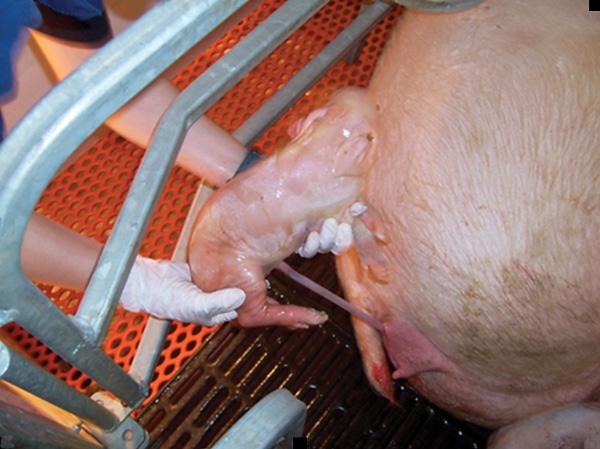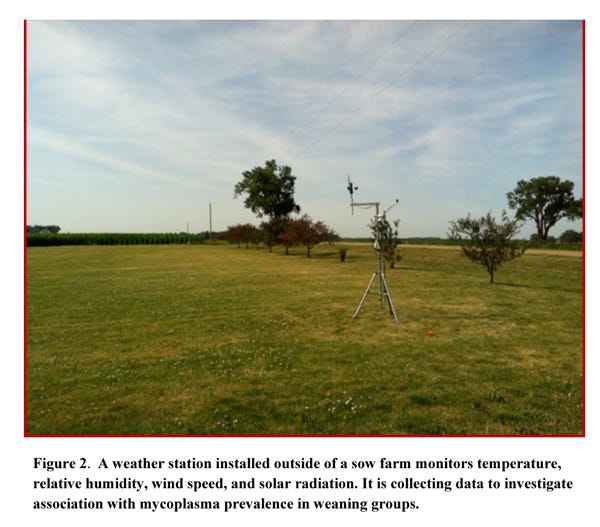These days there is a lot of talk about Mycoplasma pneumonia (MHP) prevalence at weaning and its importance for management of MHP at the farm level. Therefore, it seems crucial to define what prevalence at weaning is and what can be inferred from it.
October 29, 2012

These days there is a lot of talk about Mycoplasma pneumonia (MHP) prevalence at weaning and its importance for management of MHP at the farm level. Therefore, it seems crucial to define what prevalence at weaning is and what can be inferred from it.
MHP prevalence at weaning refers to the percentage of piglets that are positive to the pathogen detected at the end of the lactation period in a given weaning group. But to really apply this concept, we would need to understand how prevalence is measured and what the potential implications and limitations are.
In essence, our general understanding of the epidemiology of this bacterium is that piglets are born free of MHP infection (Figure 1). Then, a given number of animals get colonized during the lactation period, carry MHP to the nursery phase and end up shedding the pathogen to other animals in the group. Research has shown that the percentage of pigs colonized in the nose at weaning is correlated with the percentage of pigs infected with MHP at the end of the finishing period.

So we believe that prevalence of MHP at weaning for a given group is useful to predict if that group will, in fact, develop MHP. In other words, the higher the proportion of positive pigs at weaning, the greater are the chances of clinical disease occurring during grow-finish. However, these results don’t explain why MHP prevalence at weaning varies so much from one weaning group to another on the same farm or why in some farms the detection rate can be so low or simply negative, even though clinical disease is observed in the same group of animals in the finishing phase.
Detecting MHP
Detection of MHP in weaning pigs is usually done by polymerase chain reaction (PCR) from nasal swab samples. Diagnostic tools such as specific PCR assays are used to detect MHP because serodiagnostics (antibody test, for example) cannot differentiate between maternal antibodies, antibodies generated after vaccination or antibodies generated after natural exposure (infection). It can be argued that nasal swab samples will not detect many positives in the group.
It has been demonstrated that other type of samples, oro-pharyngeal or tracheal swabs, for example, can be more sensitive, increasing the chances of finding positive pigs. However, collecting those more sensitive samples may not be very practical in the field, and special training may be required.
Another important aspect of targeting the right sample is selecting the number of animals to be tested in the group, as well as the piglets selected for sampling. Proper sample size is very important but difficult to calculate as the estimated prevalence is usually unknown. Other factors that could influence MHP infection in piglets include animal management, climate, distance to other farms and/or roads, among others, should be taken into account when investigating the level of pathogen colonization at the end of the lactation period.
In summary, more research is needed to fine-tune the estimation of MHP prevalence at weaning and to understand the enormous variability between groups and its implication in disease severity observed at market age.
At the University of Minnesota, studies are underway to further investigate the epidemiology of MHP in swine and its effect on pig production (Figure 2).

You May Also Like



